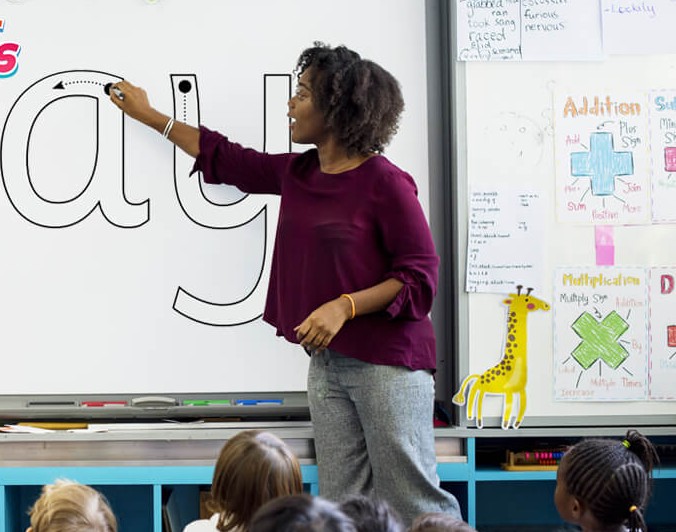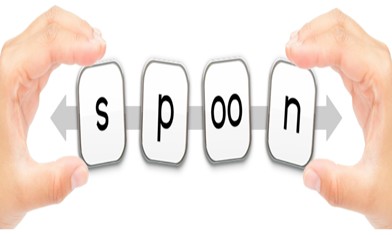Structured Synthetic Phonics Analysis

Structured synthetic phonics analysis (SSP) is an evidence-based set of reading and writing processes that teaches young children to read in a predictable, structured way that does not require children to make huge cognitive leaps.
As dedicated educators, we are continually on a quest for best classroom practices that profoundly impact students' learning outcomes. Structured synthetic phonics is an indispensable method that holds the key to outstanding literacy outcomes. This systematic teaching approach allows children to understand that our writing system is a code constructed by linking phonemes—units of speech sound—to the corresponding alphabetic characters, known as graphemes.
Systematic Synthetic Phonics Analysis: Alphabetic Writing System
Why should we learn about phonemes in a comprehensive manner? The simple answer is that phonemes are the basis of our alphabetic writing system. Housed within each word we express, phonemes, and by extension, graphemes, are the principal architects that shape our verbal and written communication.
The basis of structured synthetic phonics lies in the knowledge that the alphabet is a series of letter codes that represent phonemes in human speech. The essence of the SSP approach has been constructed on the foundational knowledge that spoken words are made up of individual phonemes that can be represented by specific symbols—graphemes.
This mapping of phonemes to graphemes is actually a two-way street; it is, in fact, reversible. Spelling, reading, and writing can be taught at all levels of the curriculum, from early prep/foundation onwards. It needs to be stated that reading, spelling, and writing are skills that need to be explicitly taught.

Structured Synthetic Phonics Analysis: A Bottom-Up Approach
When we teach synthetic phonics to our students, we do so based on the simple reality that reading and writing are opposite sides of the same coin. As such, these complementary skills should be taught to students simultaneously.
SSP champions a bottom-up approach, from the simple to the complex. We begin instruction with a focus on students learning the basic alphabetic codes and gradually introduce more complex codes when they have demonstrated a level of mastery. We then move on to more advanced-level codes. One of our primary goals, consistent with cognitive load theory, is to not overwhelm our students with too much complexity too early.
Delving deeper into how a synthetic phonics learning session might look, we need to spend some time discussing three critical skills all learners of the alphabetic codes must develop: blending, segmenting, and phoneme manipulation. These phonemic awareness skills are pillars of structured synthetic phonics success. The ability to skilfully blend, segment and manipulate individual phonemes is the key that unlocks the temple of our alphabetic writing system.
Segmentation is a vital skill when children are learning to spell new words. Being able to separate words into discrete speech sounds aids students when encoding new and unfamiliar words. This skill grants students a huge advantage when learning to spell. A defining feature of struggling spellers and readers is difficulty with segmentation.

Blending is the fluent merging of individual phonemes to form words. For instance, combining the phonemes /d/-/o/-/g/ gives us the word dog.
Segmentation, by contrast, is to break up spoken words into their separate sounds. If we were to segment the word fish, we separate the word it into its three sounds or phonemes: fish: /f/, fish - /f/ /i/ /sh/.
Advocates for structured synthetic phonics also teach and gradually hone children's phoneme manipulation skills.
By teaching students how to switch between two sounds or by adding or deleting sounds within a particular word, we guide students in how to manipulate phonemes to make new words.
For instance, the word bat can be changed to the word sat by switching the /b/ phoneme with the /s/ phoneme. Sat can be changed to sash by switching the final consonant /t/ with the consonant /sh/ to make the word sash. Sash can be changed to slash by the addition of the /l/ phoneme and changed again to lash with the deletion of the initial /s/ phoneme.
Once students are guided down this particular phonics rabbit hole by a skilled teacher, there is virtually no limit to the amount of words that may be explored.
Structured Synthetic Phonics Analysis - Teacher-Led Explicit Instruction
Structured synthetic phonics is teacher-led.
Explicit instruction is stressed with lessons being engaging and fast-paced, and that incorporates whiteboards for individual student use. A well-prepared classroom has stocks of whiteboards, markers with plenty of ink, and marker erasers for each student. Students' active participation is of paramount importance.
The teacher is always focused on providing immediate feedback and is consistently looking for teachable moments.
School whiteboards can be likened to a canvas that provides a visual frame for a truly interactive phonics lesson. Children's nascent reading and writing skills while using whiteboards have the opportunity to first grow with scaffolded support and then, ultimately, bloom.
Structured Synthetic Phonics Analysis: The Importance of Decodable Books
Decodable books are an invaluable way of cementing the early retention of alphabetic codes. They are designed to link new code knowledge with simple text and are levelled for gradual progression of students' alphabetic code knowledge in line with orthographic mapping principles.
Reading decodable books gives learners a context and scaffold for practicing their word reading and phonics skills, while also encouraging early reading fluency and comprehension.
The structured synthetic phonics approach has daily review, repetition, and scaffolded support built into each lesson. This helps children to internalize the association between phonemes and graphemes. Regular revision makes decoding skills increasingly automatic, freeing students' cognitive working space for other reading skills to develop, such as reading fluency and reading comprehension.
To maximize effective phonics teaching, a well-structured scope and sequence is of vital importance. A new lesson should be started with a quick recap of the previous lesson.
Structured synthetic phonics, when taught with fidelity, provides the level of scaffolding needed to push students toward being independent learners. It empowers them with the necessary tools to decipher and unlock the complex alphabetic code system, boosting students' confidence to successfully read, write and comprehend text.
REFERENCES:
Castles, A., Rastle, K. & Nation, K. (2018) Ending the Reading Wars: Reading acquisition from novice to expert, Psychological Science in the Public Interest, 19, 5–51.
Gough, P.B. & Tunmer, W.E. (1986) Decoding, reading, and reading disability. Remedial and Special Education, 7, 6-10
Kamhi, A.G. & Catts, H. W. (2012) Language and reading disabilities 3rd Edition, Pearson
McGuiness, D. (1998) Why Children Can't Read and What We Can Do About It. Penguin Publishing
Moats, L.C. (2010) Speech to Print: Language Essentials for Teachers Paul H Brookes Publishing Company
Seidenberg, M. (2017) Language at the speed of sight: How we read, why so many can’t, and what can be done about it Basic Books, New York
Tunmer, W.E. & Hoover, W. A. (2019) The cognitive foundations of learning to read: a framework for preventing and remediating reading.
Updated 10/2023
